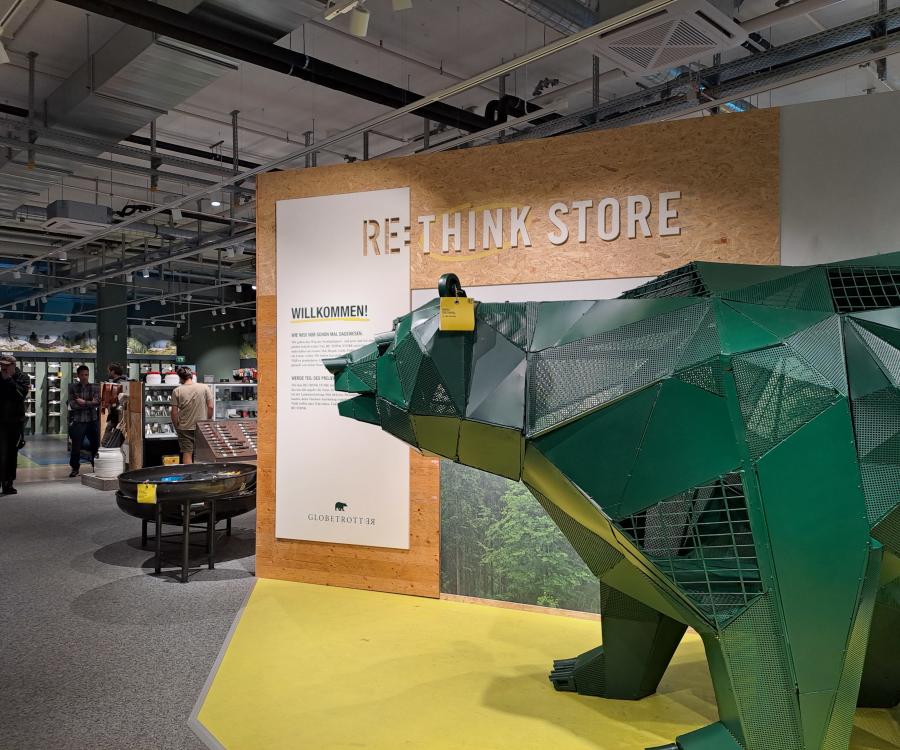
Brick-and-mortar retailers, who want to create an unforgettable shopping experience in their stores and also want to set themselves apart from online retailers, should appeal to all the senses of their customers. Multisensual marketing is an effective way to always be remembered, but only, if it is well designed.
Entering a room that smells nice; the light creates a pleasant ambiance and materials present a harmonious overall picture; the background music entices you to take your time while strolling around the store. This is what it should feel like when multisensual marketing is used correctly. When the perfumery chain store Douglas shows an image of the Provence on a monitor for instance and pairs it with lavender fragrance, the customer is transported into a very special mood.
This sounds very easy, but the implementation can often go awry. Especially when not all of the senses have been addressed. Yet studies show that the simultaneous stimulation of the senses immensely triggers the shopper’s memory. If on the other hand, the measures are not employed at the same time, he or she quickly feels overwhelmed, overexcited and ultimately makes a purchase decision only based on price.
Careful planning creates the best atmosphere
From the start, shopfitters and interior designers need to plan with the retailer when, where and how all “means to stimulate the senses “ might be used to achieve an optimal effect. Daniel Schnoedt of TeamScio has been a retail consultant for quite some time and recently published the book “Staging –Seduction – Selling More. Multisensual Marketing and Store Design“. Using practical examples, he explains the processes for optimal store planning and design.
"At first, the retailer should become aware of his strengths and create a story that becomes the central theme of the concept. Adjectives are chosen to convey this story. If I want to appear 'elegant' for instance, I have several performance factors available: ranging from employees, whom I dress in elegant clothing to stylishly packaged products all the way to an interior design that’s chic and black," explains Schnoedt.
He states that products are becoming more and more comparable while prices and employees are interchangeable – harmonious staging however can create a unique selling proposition. This is why you need to consider how the adjective 'elegant' might also be reflected at other levels – precisely also via the senses. "When you tell a harmonious story, you register double-digit long-term growth," knows Schnoedt.
Daniel Schnoedt warns however that "the use of scents should always be viewed with a more critical eye. Retailers should focus on the basics. The art is in reaching the recognition threshold but not crossing it." The customer should therefore notice that he or she smells coffee or is listening to classical music. However, the author knows from his own experience that sensory overload can quickly have the opposite effect: "I am completely irritated by the second visit if I enter a supermarket where I am bombarded non-stop with scents and sounds from every direction." His advice is therefore: all sensations should convey the same experience.
Incorporating the customer’s sense of space
Aside from the well-known senses of hearing, sight, smell, touch and taste, interior designers can also use a customer sensation that’s harder to grasp, but that’s still extremely important: spatial orientation. Schnoedt mentions one example: "Customers from specific cultural groups usually follow a certain sequence when they go shopping. This is easy to understand when it comes to groceries for example. The English have a different way of eating breakfast than Germans. The placement of items in the store should therefore reflect how our breakfast is designed. This way, the sequence becomes relatable to the shopper." The customer can thus be subtly guided in her purchase, since she is intuitively better able to find her way around the store.
The product structure, space allocation and the sensual design of a space are closely connected. During the planning process the shopfitter can therefore already access a variety of simple but effective elements that manage to create exactly the type of atmosphere that ultimately prompts the customer to stay in the showroom for as long as possible and buy more.
Natascha Mörs; iXtenso.com




